|
News Headlines Digest
July 2012
We Need A New Web Editor
who is ideally based in the Merseyside, Isle of Man, Cumbria or the
general NW England Area, but would also consider someone
living in the South or South West areas of Wales
or the Plymouth/Cornwall area
these are some of the areas of planned future
Astro-Archæological Expeditions
Due to the deteriorating spinal problems of our Web Editor updates for the News pages and SkyWatching Calendar will be sporadic if at all until we find an appropriate replacement. In the meantime we apologise for any inconvenience …
“Spanish Cave Neanderthal Eating Habits not as Simple as Thought”
Popular Archaeology (USA)
“Ancient Mayan ‘night sun’ temple found in Guatemala”
Straits Times (Singapore)
“Flying Lasers Reveal Buried Historical Structures”
Spiegel Online (Germany)
“Modern culture emerged in Africa 20,000 years earlier than thought”
Los Angeles Times (USA)
“Archaeologists uncover Mona Lisa model’s remains”
The Telegraph (Australia)
“Lost Viking Military Town Unearthed in Germany?”
National Geographic News (USA)
“Golden medallions from Roman era found in village near Bulgaria’s Bourgas”
The Sofia Globe (Bulgaria)
“Mexican archaeologists unearth ancient 1,100-year-old burial chamber”
National Post (Canada)
“Silver treasure found at Swedish shipwreck”
The Local (Sweden)
“The Clovis First Theory is put to rest at Paisley Caves”
EurekAlert (USA)
“The evidence for a pre-13,000 year old non-Clovis culture in North America includes obsidian and chert artifacts known as Western Stemmed projectile points, and DNA-profiling of dried human excrement — more accurately known as coprolites.
Both obsidian projectile points and coprolites were excavated from sediments in the Paisley Caves.
Previous investigations found that human coprolites in the caves predated the Clovis culture by over 1,000 years; however, critics questioned the interpretations by saying that the cave strata had not been sufficiently examined and that no Clovis-age stone tools had been found with the coprolites.
Critics also questioned whether or not younger DNA could have been washed down through the cave’s sediments, thereby contaminating non-human coprolites with more recent human DNA. If true, evidence for pre-Clovis human presence would have been bogus.
The new study refutes every one of the critics’ arguments and uses overwhelming archaeological, stratigraphic, DNA and radiocarbon evidence to conclusively state that humans — and ones totally unrelated to Clovis peoples — were present at Paisley Caves over a millennium before Clovis.”
[Full Story]
“Double-Edged Sword Found in Salme Ship Burial Site”
Estonian Public Broadcasting (Estonia)
“Three Kingdoms’ Tomb Holding Warrior Discovered”
Live Science/Yahoo News (USA)
“Earth’s water formed close to home”
ABC Science News (Australia)
“Archaeologists unearth temple to Demeter in Sicily”
ANSA (Italy)
“Hidden Doggerland underworld uncovered in North Sea”
BBC News (UK)
“Archaeologists Discover Bulgarian Herculaneum”
Novinite (Bulgaria)
“Native American Origins Stem from at Least Three Separate Migrations”
Popular Archaeology (USA)
“New Section of Inca Trail Discovered in Peru”
Hispanically Speaking News (Mexico)
“Timbuktu Arabs set up armed watch at ancient tombs”
AFP (France)
“Archaeologists Unearth and Reopen the Achaemenid Sewage System at Persepolis”
CAIS (Iran)
“Are global cataclysms cyclic?”
ABC Radio National (Australia)
“Cataclysms of a global nature have occurred right throughout the geological record. The original geological timetable by Baron Cuvier was based on horizons where entire fossil suites were wiped out and subsequently replaced by completely new suites, but the concept that all geological processes are slow labelled uniformitarianism was popular in the 19th century and it challenged the catastrophist’s view.
Uniformitarianism held that we have a foreshortened view of our distant past, so that abrupt changes in the fossil suites need not have been abrupt after all but separated by millions of years of evolution – a much more comforting view. But when similar extinction events have occurred close to our own time this view loses much of its relevance.
For instance around 14,000 years ago there was a major extinction event that took away 70% to 90% of the large animals in the Americas, while Europe fared little better.
There has also been a periodic, unexplained and often traumatic termination of cultures in pre-history and this sort of thing is unlikely to go away just because homo sapiens has recently taken charge of the world’s disasters. So it would be useful if we could understand the origins of global cataclysms.
When looking at megalithic monuments in Britain and France a few decades ago, it became apparent that major disruptions such as changes in alignment and even the desecration and abandonment of monuments took place in the closing stages of the 3rd millennium BC, roughly about the time of the first Dark Age of Egypt.
Approximately a thousand years later a similar cultural upheaval led to the end of sun worship in north west Europe when megalithic monuments like Stonehenge were abandoned for good. The timing coincided with another calamity in the Mediterranean; notably, the abrupt disappearance of the Minoan and Mycenaean empires
So could one tentatively postulate a cyclicity of cataclysms in our recent past? If so, where does that leave us today on the eve of another gravitational extreme?”
[Full Story]
“5,300-year-old Mongolian statue pieced together”
China Daily (China)
“The Tibetan woolly rhino – adapted for ice and snow”
ABC Radio National – The Science Show (Australia)
“Archaeologists Uncover Gold Treasure Near Herzliya”
Arutz Sheva (Israel)
“‘Frankenstein’ Bog Mummies Discovered in Scotland”
National Geographic News (USA)
“Unlocking the secrets of indigenous astronomy”
ABC Bush Telegraph (Australia)
“Searching for Ancient Syphilis DNA in Newborns”
Past Horizons (UK)
“China’s earliest wine unearthed in NW tomb”
XinhuaNet (China)
“Classic Maya “Collapse” Did Not Happen, Say Researchers”
Popular Archaeology (USA)
“Life after Darwin: Recent genetic discoveries demonstrate that Darwin’s ‘tree of life’ theory of evolution is wrong and it’s time to move on, argues Didier Raoult”
ABC Science News (Australia)
“Many Greek philosophers perceived the world to be in perpetual motion — a process of constant evolution. In Charles Darwin’s world, however, creationism set the rules for science.
So, underpinning his theory of evolution is the literal interpretation of the Bible that dominated his era, combined with Aristotle’s vision of nature as definitively fixed.
Darwin, together with J. B. Lamarck, promoted a vision of a changing world, while upholding the idea that organisms evolved from a single root — a position held by Adam and Eve in the creationist worldview, and taken over in the modern era by the Last Universal Common Ancestor (LUCA).
And from that remnant of the Biblical story of creation sprung the notion of a tree of life, alongside major concepts such as gradualism (the view that speciation does not occur abruptly) and the idea that minor selection pressures can, over time, have a profound effect on improved fitness.
Darwin’s vision of the world deeply influenced biology in the 20th century, despite persistent questions posed by factors such as lateral gene transfer, neutral evolution, and chaotic bottlenecks in natural selection. But recent genetic research unequivocally refutes this worldview.”
[Full Story]
“Large Roman cemetery discovered in Norfolk”
BBC News (UK)
“Bronze Age workshop found”
InCyprus (Cyprus)
“Early humans settled in Arabia”
USA Today (USA)
“Feathered dino fossil found in Germany”
ABC Science News (Australia)
“Utah dig unearths large Fremont Indian structure”
KRNV News4 (USA)
“Excavations reveal the forgotten cultural treasures of Sidon’s past”
The Daily Star (Lebanon)
“Legendary Viking town unearthed”
ScienceNordic (Norway)
“Malian Islamists attack world heritage site mosques in Timbuktu”
The Guardian (UK)
“Ancient relics discovered in Peru: report “
The Australian (Australia)
“Mysterious clay pots in China 20,000 years old: Scientists”
Business Standard (India)
“Archaeologists have unearthed ancient pottery fragments in China which they say are at least 20,000 years old, making them the oldest known pottery in the world.
It has so far been believed that the invention of pottery happened about 10,000 years ago when humans moved from being hunter-gathers to farmers.
But, the new find, which has been carbon dated by a team of Chinese and American researchers, shows scorch marks which indicate it may have been used in cooking.
The discovery, the researchers said, has now pushed the invention of pottery back to the last ice age, and they are trying to understand how and why they were made, the Daily Mail reported.”
[Full Story]
“Possible mammoth cemetery found in Serbia”
Cosmos Magazine (Australia)
“Archaeologists find 2nd reference to end of Mayan era”
Fox News Latino (USA)
“Ancient bridge at Aizanoi to be restored”
Hurriyet Daily News (Turkey)
“Oil and politics are ancient Babylon’s new curse”
Kitsap Sun (USA)
“Himachal seeks amendments to archaeological act”
NewsTrack India (India)
“Bulgaria archaeologists discover ancient settlement underwater at Cape Arkin”
Focus News (Bulgaria)
“Battle to stop time bandits selling off our history”
Yorkshire Post (England)
“Oldest Neolithic Bow Discovered in Europe”
Science Daily (USA)
“The Antikythera Mechanism Research Project”
Cardiff/Athens Universites (Cymru/Greece)
[In October 1900, Captain Dimitrious Kondos was leading a team of sponge divers near the the island of Antikythera off the coast of Greece. They noticed a shipwreck about 180 feet below the surface and began to investigate. Amongst the artifacts that they brought up was a coral-encrusted piece of metal that later archaeologists found was some sort of gear wheel.
The rest of the artifacts, along with the shape of the boat, suggested a date around 2000 years ago, which made the find one of the most anomalous that had ever been recovered from the Greek seas. It became known as The Antikythera Mechanism.
In 2006 the journal “Nature” published a letter, and another paper about the mechanism was published in 2008, detailing the findings of Prof. Mike G. Edmunds of Cardiff University. Using high-resolution X-ray tomography to study the fragments of the anomalous Antikythera Mechanism, they found that it was in fact a bronze mechanical analog computer that could be used to calculate the astronomical positions and various cycles of the Moon – as seen from the Earth: – Ed]
Part of the Antikythera Mechanism
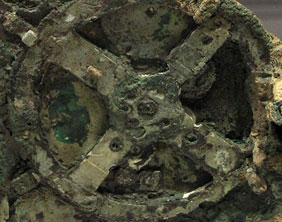
Copyright © 2006
Antikythera Mechanism Research Project
“Antikythera Mechanism – World’s earliest existing analogue computer”
HotnHit News (India)
“Decoding an Ancient Computer: Greek Technology Tracked the Heavens”
Scientific American (USA)
“Watch a video explaining the Antikythera mechanism”
Nature (UK)
“World’s First Computer Rebuilt, Rebooted After 2,000 Years”
Wired Gadget Lab (USA)
“Antikythera: A 2,000-year-old Greek computer comes back to life”
The Guardian Science Blog (UK)
Google image search results for The Antikythera mechanism
Google (USA)
|
“Decoding the Heavens:
Solving the Mystery of the World’s First Computer”
by
Jo Marchant
William Heinemann Ltd
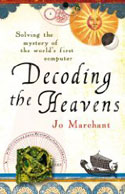
Get This Book From:
Amazon.com
Amazon.co.uk
“For more than a century this ‘Antikythera mechanism’ puzzled academics, but now, more than 2000 years after the device was lost at sea, scientists have pieced together its intricate workings.”
“Ancient Greek Computer from Rhodes: Known as the Antikythera Mechanism”
by
V. J. Kean

Get This Book From:
Amazon.com
Amazon.co.uk
“This is the true history of an astonishing machine during the time when the island of Rhodes was the centre of both cultural and intellectual activity within the Roman Empire.
Made on the island of Rhodes around 71BC, the computer was lost beneath the waves for almost 2000 years.”
“Gears from the Greeks: The Antikythera Mechanism, a Calendar Computer from Ca 80 B.C.”
by
Derek de Solla Price
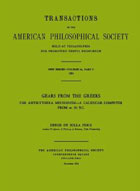
Get This Book From:
Amazon.com
Amazon.co.uk
“The first great discovery in underwater archaeology yielded not only a fine collection of art treasures but also the most enigmatic, most complicated piece of scientific machinery known from antiquity.”
“The Works of Archimedes”
by
Archimedes
(Author)
&
Sir Thomas Heath
(Translator)
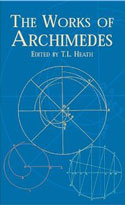
Get This Book From:
Amazon.com
Amazon.co.uk
“The complete works of antiquity’s great geometer appear here in a highly accessible English translation by a distinguished scholar.
Remarkable for his range of thought and his mastery of treatment, Archimedes addressed such topics as the famous problems of the ratio of the areas of a cylinder and an inscribed sphere; the measurement of a circle; the properties of conoids, spheroids, and spirals; and the quadrature of the parabola.
This edition offers an informative introduction with many valuable insights into the ancient mathematician’s life and thought as well as the views of his contemporaries. Modern mathematicians, physicists, science historians, and logicians will find this volume a source of timeless fascination. Unabridged reprint of the classic 1897 edition, with supplement of 1912.”
“Circumference: Eratosthenes and the Ancient Quest to Measure the Globe”
by
Nicholas Nicastro
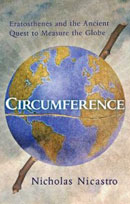
Get This Book From:
Amazon.com
Amazon.co.uk
“Forget the myth of Columbus’ daring in imagining a round earth. Nicastro not only traces the conception of a spherical world back more than a millennium before the seafarer set sail but also recounts in fascinating detail how the ancient Greek geometer Eratosthenes measured that sphere with astonishing accuracy.”
Though it would be thousands of years before his feat received appropriate recognition, Eratosthenes conducted his revolutionary science with nothing more complex than a sundial and a compass.
With reader-friendly clarity, Nicastro explains the surprisingly simple calculations behind the earth measurement. But readers learn about much more than geodesy: Nicastro delivers the deeply human story of a multitalented genius whose tenure as the head of Alexandria’s famed library occasioned remarkable achievements in literature, history, linguistics, and philosophy despite the political turmoil that periodically rocked the Ptolemaic world.”
|







